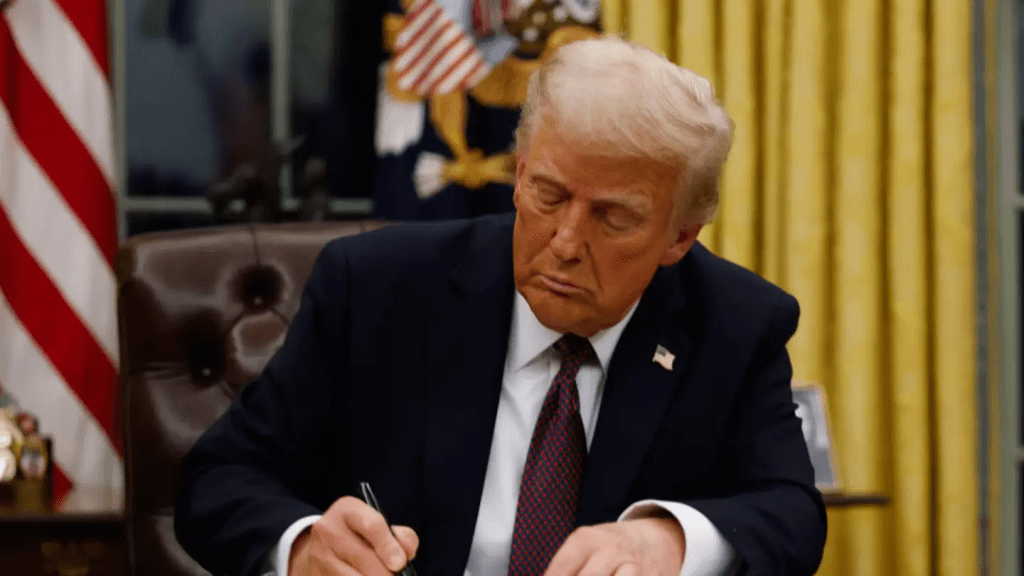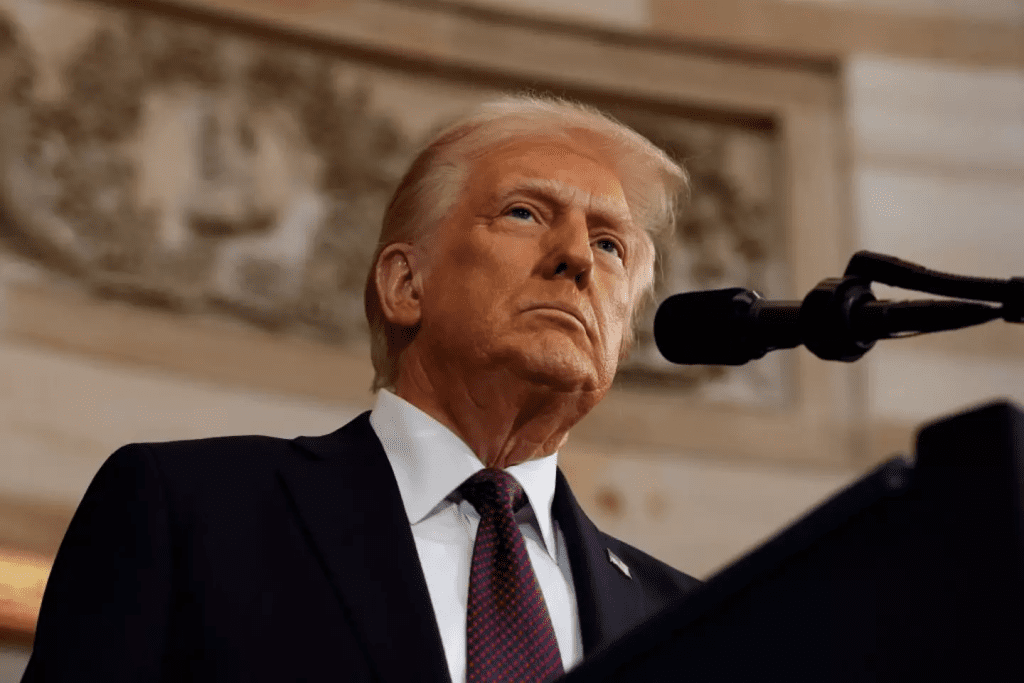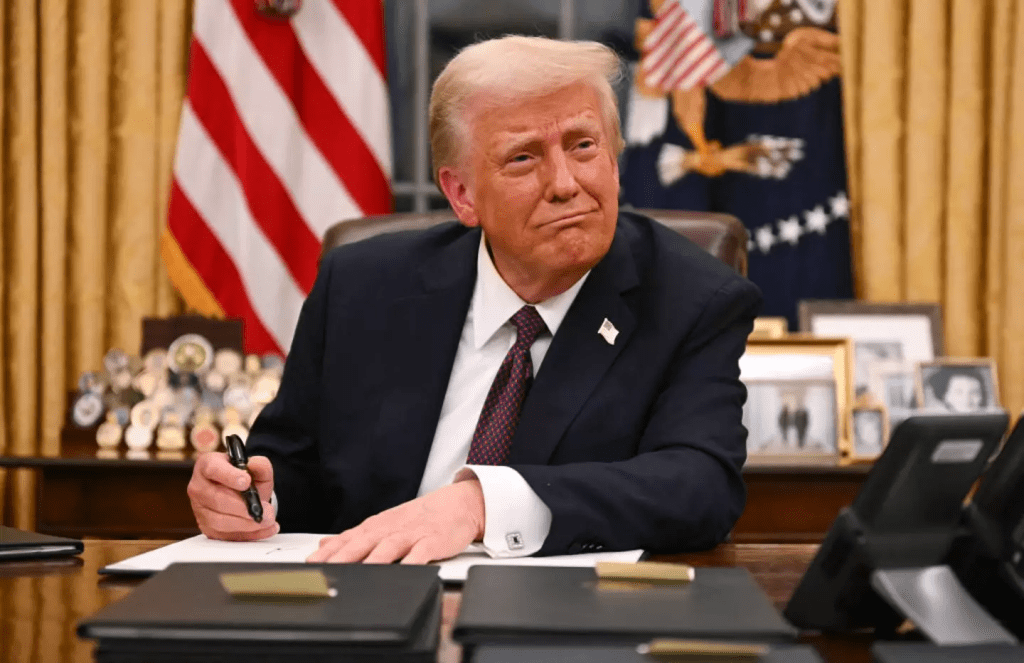New proposal could keep Donald Trump as president until 2032 following inauguration
A Historic Inauguration and a New Proposal
On January 20, Donald Trump was sworn in as the 47th president of the United States, marking his return to the Oval Office after his first term ended in 2021. His inauguration made him only the second president in U.S. history, after Grover Cleveland, to serve non-consecutive terms. However, a proposal introduced by Tennessee Congressman Andy Ogles has sparked widespread discussion about the potential for Trump to extend his presidency well beyond traditional limits.
The proposal seeks to amend the U.S. Constitution, specifically the 22nd Amendment, which currently limits presidents to two terms. If successful, this change could allow Trump to serve as president until 2032, a move that has ignited both support and criticism across the political spectrum.

The 22nd Amendment: A Historical Safeguard
The 22nd Amendment, ratified in 1951, was designed to prevent any individual from holding the presidency for more than two terms. This limitation was introduced in the wake of Franklin D. Roosevelt’s unprecedented four-term presidency, which raised concerns about the potential for excessive executive power.
The amendment states, “No person shall be elected to the office of the President more than twice, and no person who has held the office of President, or acted as President, for more than two years of a term to which some other person was elected President shall be elected to the office of the President more than once.”
Ogles’ proposed resolution seeks to revise this amendment, allowing a president to serve a third consecutive term if deemed necessary to continue their leadership and accomplish long-term goals.
Ogles’ Case for a Third Trump Term
In his statement, Congressman Ogles argued that Donald Trump’s leadership is essential for addressing the challenges facing the nation. “President Trump’s decisive leadership stands in stark contrast to the chaos, suffering, and economic decline Americans have endured over the past four years,” Ogles wrote.
He further emphasized that Trump has demonstrated a unique ability to reverse national decline and restore American greatness, stating, “He must be given the time necessary to accomplish that goal.” By proposing this constitutional amendment, Ogles hopes to extend Trump’s presidency to ensure the continuation of policies and initiatives he believes are critical for the country’s success.
Immediate Actions Under Trump’s New Term
Since returning to office, Trump has wasted no time implementing significant changes. Within his first 24 hours, he signed a series of executive orders and memorandums that have sparked both praise and controversy. Among these actions are:
- Pardons Related to the Capitol Riots: Trump pardoned 1,500 individuals convicted or facing charges for their involvement in the January 2021 Capitol riots. This sweeping move has drawn criticism from some quarters while being celebrated by his supporters.
- Gender Recognition Policy: Trump signed an order recognizing only two genders—male and female—stating that the decision aims to “defend women from gender ideology extremism and restore biological truth.”
- Temporary Reversal of TikTok Ban: In a surprising move, Trump temporarily reversed the ban on TikTok, citing the need to review national security concerns while maintaining access to a platform used by millions of Americans.
These actions highlight Trump’s intention to make bold policy moves early in his new term, reinforcing his leadership style and commitment to his base.

The Path to Amending the Constitution
Amending the U.S. Constitution is a complex and arduous process, requiring significant political support and public backing. For the proposed amendment to succeed, it must first be approved by a two-thirds majority in both the House of Representatives and the Senate. It must then be ratified by three-fourths of state legislatures, a threshold that has historically been difficult to meet.
Given the polarized nature of American politics, achieving such widespread agreement on a controversial issue like extending presidential term limits presents a significant challenge. However, Ogles and Trump’s supporters are determined to rally the necessary support, emphasizing the need for strong, consistent leadership in uncertain times.
Public Reaction and Political Implications
The proposal to allow Trump to serve until 2032 has elicited mixed reactions from the public and political leaders. Supporters argue that Trump’s leadership is critical for addressing economic challenges, national security concerns, and cultural debates. They view the amendment as a necessary step to ensure stability and progress.
Critics, however, warn that extending presidential term limits could set a dangerous precedent, potentially undermining democratic principles and consolidating power in the executive branch. They argue that the current two-term limit serves as an important safeguard against authoritarianism.

A Historical Parallel: Grover Cleveland’s Non-Consecutive Terms
Trump’s return to the presidency draws comparisons to Grover Cleveland, the only other president to serve non-consecutive terms. Cleveland, the 22nd and 24th president, governed during a time of political upheaval and economic challenges. His ability to regain the presidency after a defeat underscored his resilience and political acumen.
Trump’s journey shares similarities, as he remains a polarizing yet influential figure in American politics. Whether history will view his second term in a similar light depends on the outcomes of his policies and the impact of Ogles’ proposed amendment.
The Road Ahead: What’s at Stake?
As the debate over Ogles’ proposal unfolds, the nation faces a pivotal moment in its political history. The prospect of extending presidential term limits raises profound questions about the balance of power, the role of leadership, and the resilience of democratic institutions.
For Trump’s supporters, the proposed amendment represents an opportunity to solidify his legacy and continue his vision for America. For his detractors, it underscores the importance of maintaining constitutional safeguards to protect against the concentration of power.
Conclusion: A Proposal That Could Reshape History
The idea of Donald Trump serving as president until 2032 is both bold and controversial, sparking intense debate about the future of American democracy. Whether Ogles’ proposal succeeds or falters, it highlights the enduring influence of Trump’s leadership and the deeply polarized nature of the nation’s political landscape.
As the country grapples with this proposal, one thing is certain: the decision will have far-reaching implications, shaping not only the trajectory of Trump’s presidency but also the broader principles that define American governance. The outcome of this debate will determine whether history is rewritten or preserved, leaving a lasting impact on the nation’s political legacy.






